Jaipur's Majestic Marvels in 3 घंटे
Join our free walking tour through Jaipur, where vibrant culture and rich history await you at every turn, revealing the city's royal past and architectural wonders.
Time
3 Hours
Stops
8 Places
Distance
5.3 km
Hawa Mahal (Palace of Winds)
Start your journey at the iconic Hawa Mahal, a stunning five-story palace with a unique facade designed to allow royal women to observe street festivals while remaining unseen.
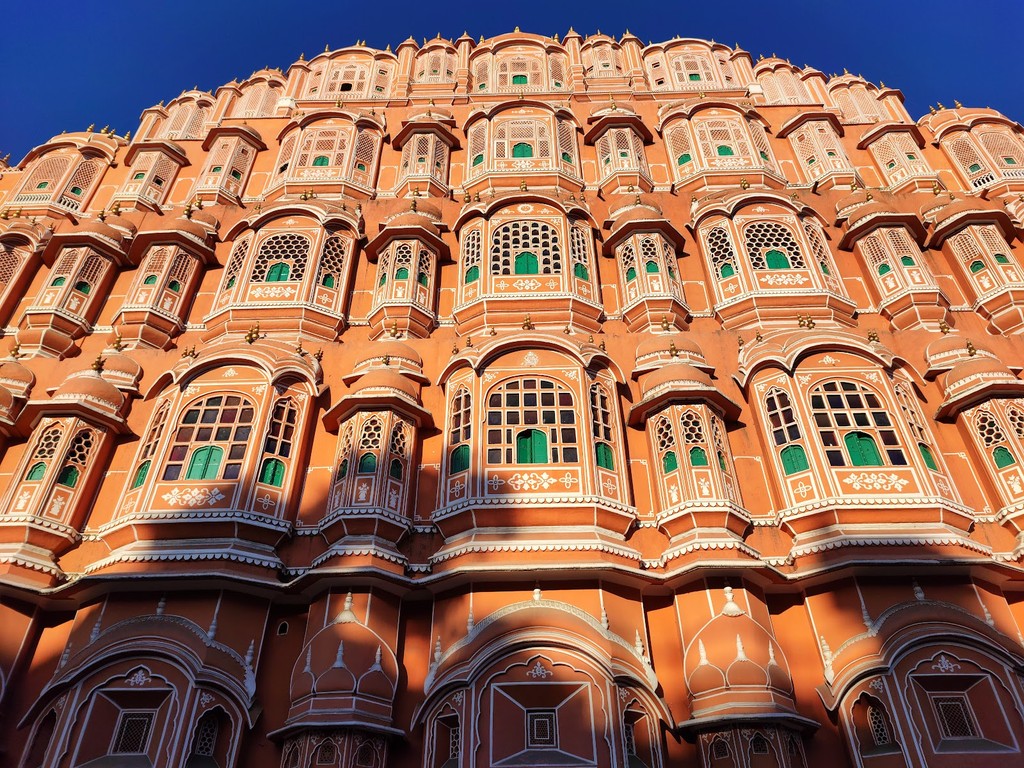
Hawa Mahal (Palace of Winds) (Source: Google Maps)
Hawa Mahal, or the Palace of Winds, is an iconic structure built in 1799 by Maharaja Sawai Jai Singh II. Designed by architect Lal Chand Usta, its unique façade features 953 small windows, or jharokhas, which allowed royal women to observe street life and festivals without being seen. The palace is adorned with intricate latticework and is a stunning example of Rajput architecture, reflecting the cultural richness of Jaipur. The pastel pink sandstone façade, combined with its five-story structure, creates a striking silhouette against the blue sky. Hawa Mahal is not just a beautiful building; it represents the royal lifestyle and traditions of the time, making it a must-visit landmark in Jaipur.
Govind Dev Ji Temple
A brief walk will take you to the Govind Dev Ji Temple, a significant place of worship for the locals, dedicated to Lord Krishna and known for its vibrant atmosphere.
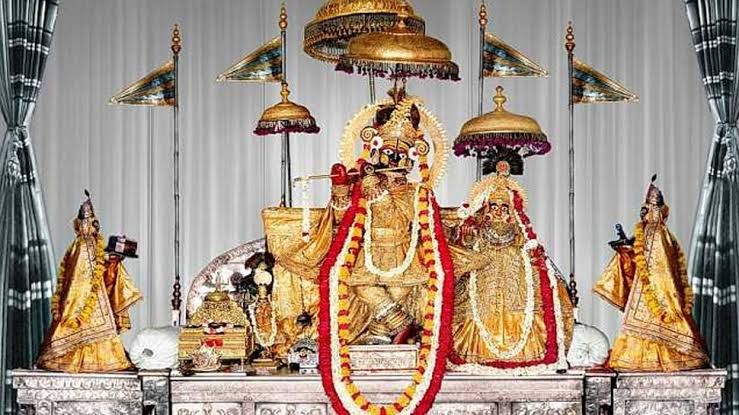
Govind Dev Ji Temple (Source: Google Maps)
The Govind Dev Ji Temple is a significant religious site located in the City Palace complex, dedicated to Lord Krishna. Built in the 18th century by Maharaja Sawai Jai Singh II, the temple is known for its exquisite architecture and vibrant atmosphere, attracting both devotees and tourists. The temple houses a revered idol of Govind Dev Ji, which is believed to be one of the most important representations of Lord Krishna in the region. The temple's intricate carvings, beautiful frescoes, and the melodious chants of devotees create a spiritually enriching experience. Festivals celebrated here, especially Janmashtami, draw large crowds, showcasing the deep-rooted cultural significance of this sacred place.
City Palace
Continue to the nearby City Palace, a magnificent blend of Rajasthani and Mughal architecture, offering insight into the royal heritage of Jaipur.
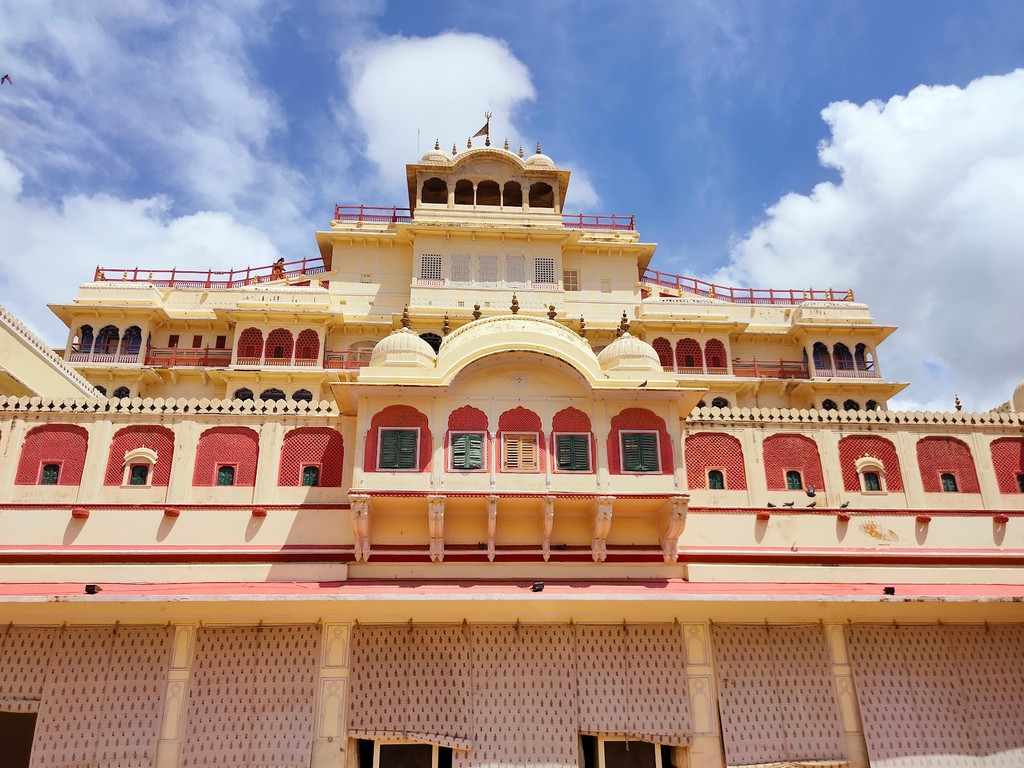
City Palace (Source: Google Maps)
The City Palace, a magnificent complex in Jaipur, showcases a fusion of Rajasthani and Mughal architecture. Commissioned by Maharaja Sawai Jai Singh II in 1727, it served as the royal residence and administrative center. The palace complex features several courtyards, gardens, and buildings, including the Chandra Mahal and Mubarak Mahal, each with distinct architectural styles and historical significance. The Chandra Mahal is still the residence of the royal family and houses a museum with artifacts reflecting the royal heritage. The intricate peacock motifs, elaborate mirror work, and vibrant colors of the palace highlight the artistry of the era. The City Palace is a testament to Jaipur's royal past and a symbol of its cultural richness.
Jantar Mantar
Just a short walk from Hawa Mahal, Jantar Mantar is an astronomical observatory featuring the world's largest stone sundial, showcasing the scientific prowess of ancient India.
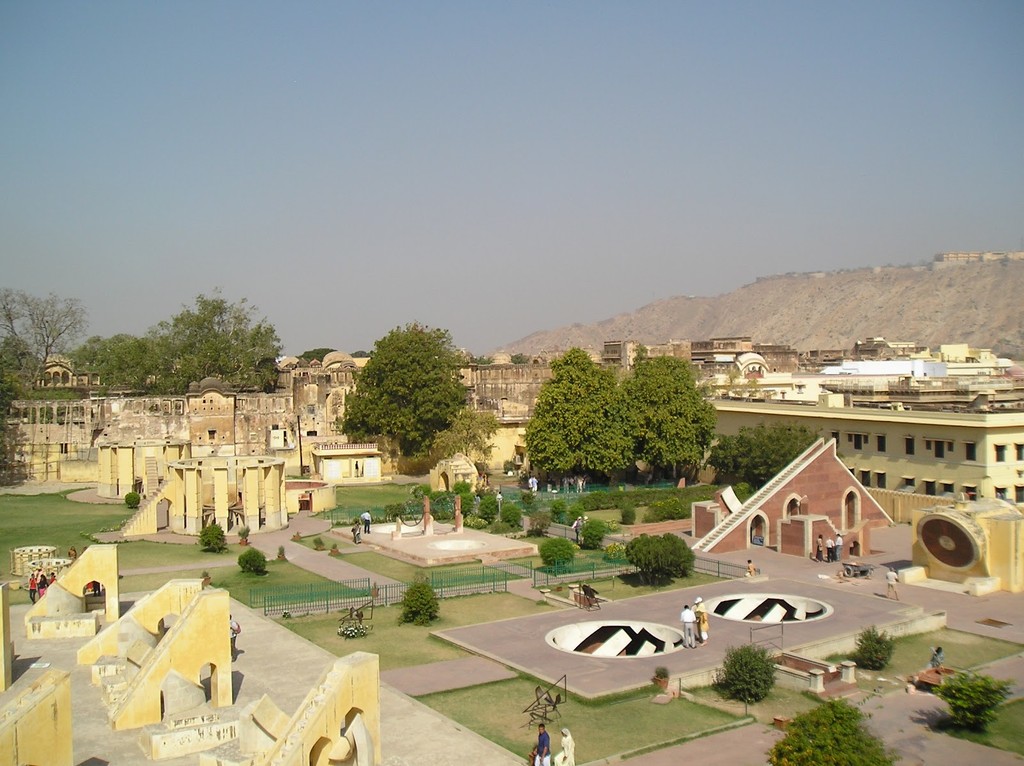
Jantar Mantar (Source: Google Maps)
Jantar Mantar, an astronomical observatory built in the 18th century by Maharaja Sawai Jai Singh II, is a UNESCO World Heritage Site. It features a collection of architectural astronomical instruments, including the world’s largest stone sundial, known as Samrat Yantra. The observatory was designed to observe celestial bodies and track time with remarkable accuracy. Each instrument serves a specific purpose, such as measuring the position of stars and planets or predicting eclipses. The grandeur of its structures, constructed from stone and marble, reflects the scientific advancements of ancient India. Jantar Mantar not only showcases the Maharaja's passion for astronomy but also stands as a remarkable achievement in the history of science.
Lassiwala (MI Road)
Pause for a refreshing break at Lassiwala on MI Road, famous for its traditional Indian lassi, a yogurt-based drink that is a must-try in Jaipur.
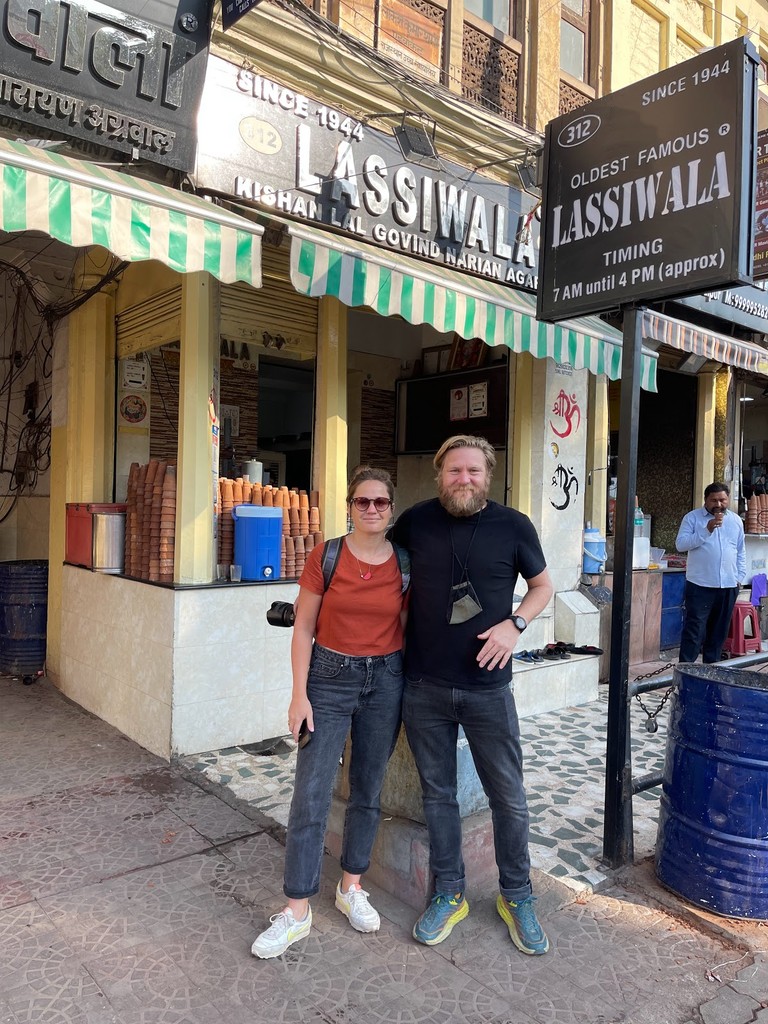
Lassiwala (MI Road) (Source: Google Maps)
Ram Niwas Garden
Adjacent to the Albert Hall Museum, explore the lush Ram Niwas Garden, a perfect spot to relax and enjoy the local flora amidst your cultural exploration.
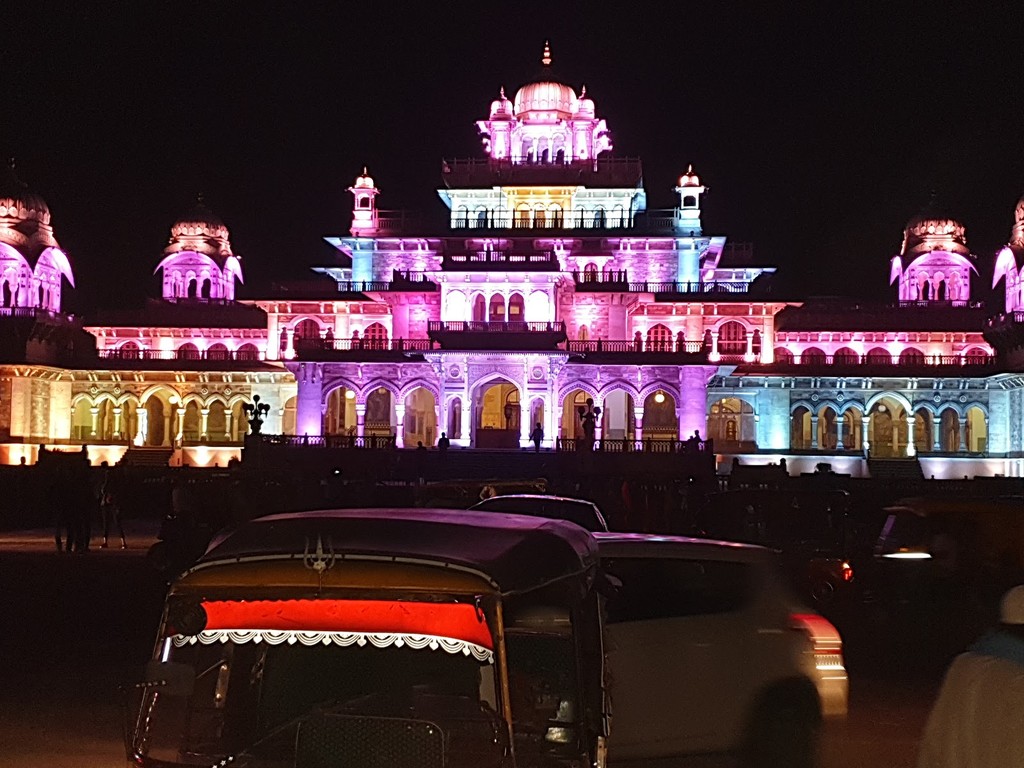
Ram Niwas Garden (Source: Google Maps)
Ram Niwas Garden, established in 1868 by Maharaja Sawai Ram Singh II, is a lush green oasis in the heart of Jaipur. Spanning over 33 acres, the garden features beautiful pathways, fountains, and a variety of flora, making it a perfect spot for relaxation and leisure. The garden also houses the Albert Hall Museum, adding cultural significance to its serene environment. It serves as a popular recreational area for locals and tourists alike, hosting various events and exhibitions throughout the year. The garden’s design reflects the Mughal style of landscaping, with an emphasis on symmetry and harmony with nature. Visitors can enjoy a peaceful stroll, admire the blooming flowers, or simply unwind amidst the greenery.
Albert Hall Museum
Head towards the Albert Hall Museum, the oldest museum in Rajasthan, showcasing an impressive collection of artifacts reflecting the rich history and culture of the region.
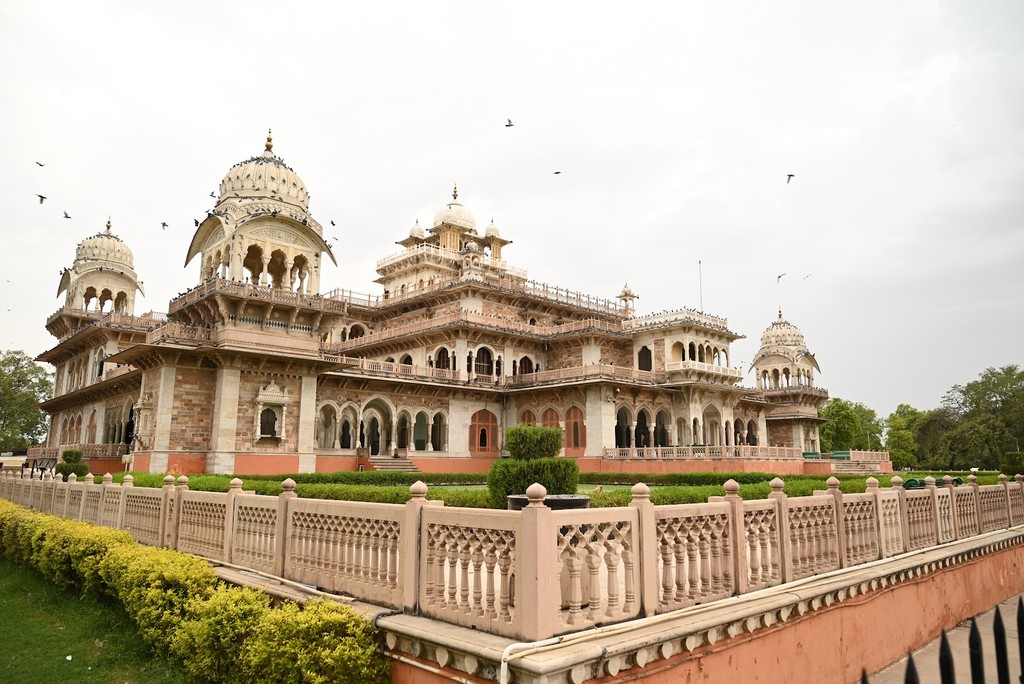
Albert Hall Museum (Source: Google Maps)
The Albert Hall Museum, inaugurated in 1887, is the oldest museum in Rajasthan and a fine example of Indo-Saracenic architecture. Designed by Sir Samuel Swinton Jacob, the museum was originally intended to be a town hall but was later transformed into a museum. It houses a vast collection of artifacts, including textiles, paintings, and sculptures, showcasing the rich cultural heritage of Rajasthan. The museum's architecture features intricate carvings, domes, and a striking façade, making it a visual delight. Notably, the museum is home to a rare collection of Egyptian mummies and a variety of decorative arts. The Albert Hall Museum stands as a testament to the region's history and artistry, attracting numerous visitors who seek to explore the cultural treasures of Rajasthan.
Masala Chowk
Conclude your tour with a visit to Masala Chowk, a lively open-air food court offering a variety of traditional Rajasthani snacks and street food, perfect for a flavorful end to your journey.
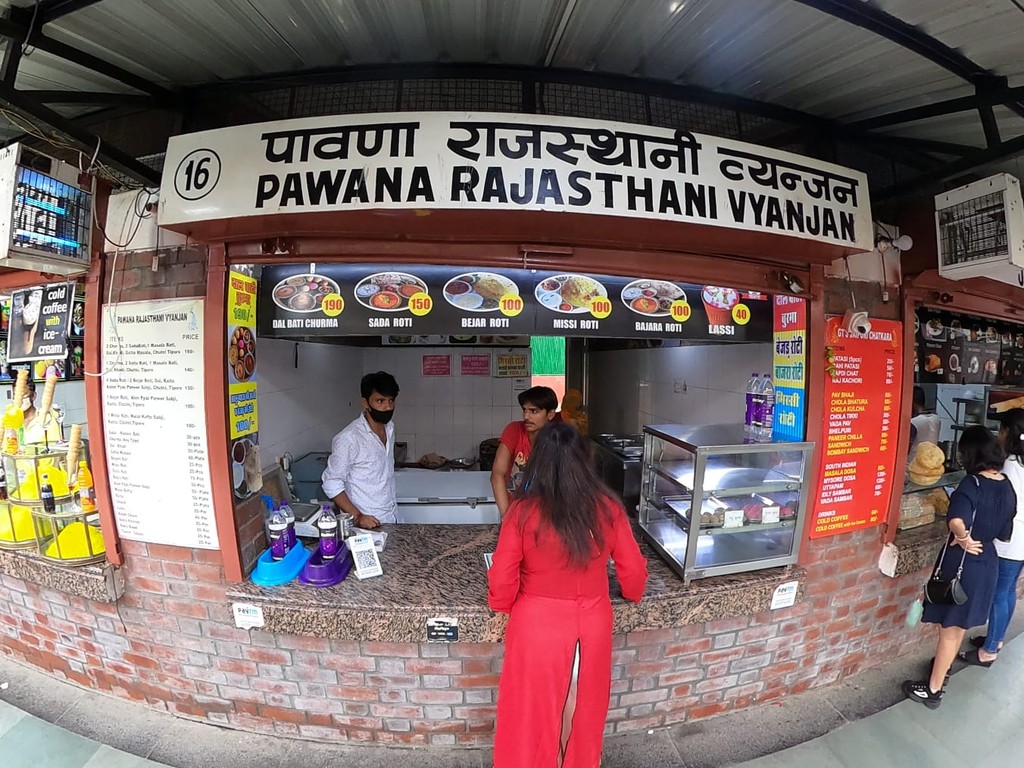
Masala Chowk (Source: Google Maps)

Your travels, your rules.
Create your own Free Walking Tours.
Set your preferences, distances and anything you want to do or see.
Completely free, no payment required.